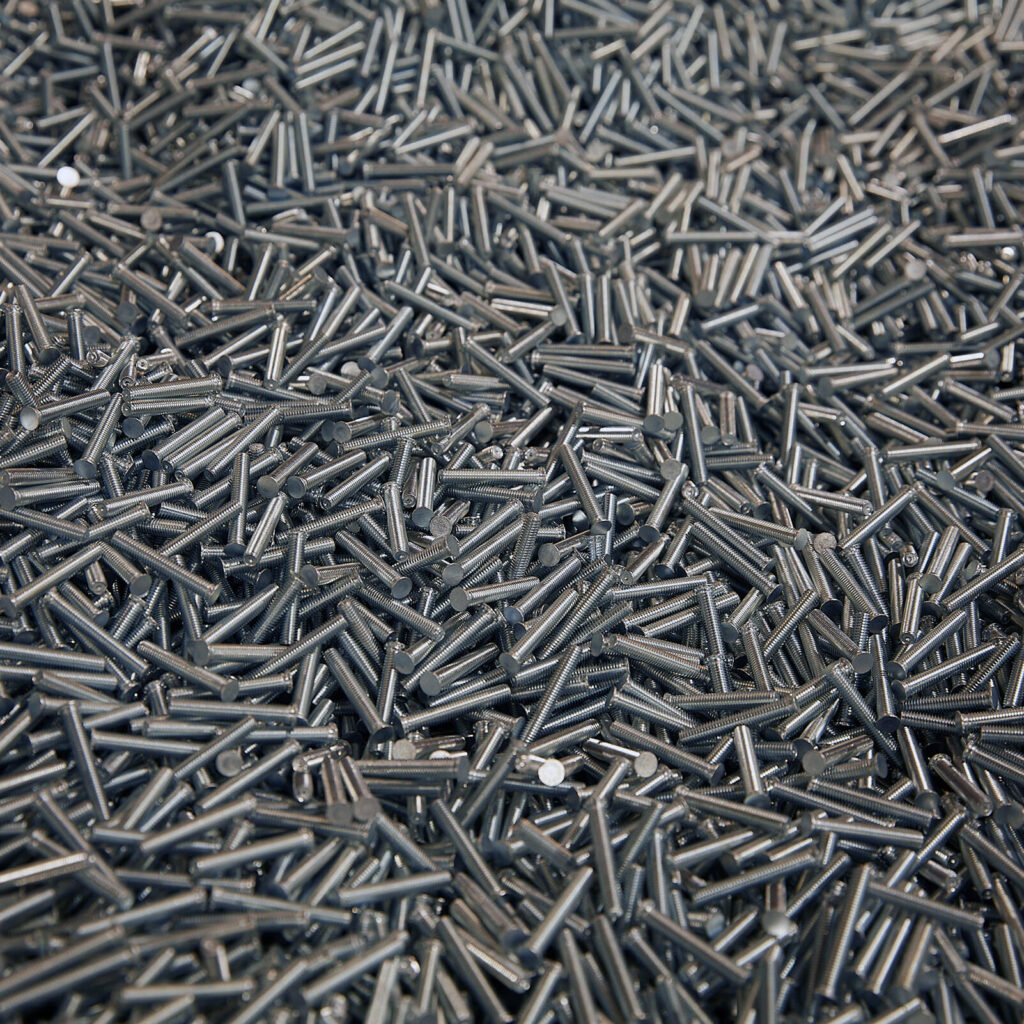The ‘Hard Fastener Facts’ For Self-Clinching Nuts With Stainless

Designers will turn to self-clinching fasteners when they need a practical method to provide threads in thin-metal sheets. The fasteners install permanently; reduce hardware; and promote thinner and lighter designs. In stainless applications, though, designers may run into some particularly hard choices.
A prevalent misconception is that all stainless self-clinching fasteners will perform as intended in all stainless sheets. But the relative hardness of fastener and sheet looms as an overriding influence, because self-clinching requires that the fastener always be harder than its host sheet.
In general, the installation of self-clinching fasteners is accomplished by pressing the fastener into place in a properly sized drilled or punched hole. This process causes displaced sheet material (“softer” than the fastener) to cold flow into a specially designed annular recess in the shank or pilot of the fastener, permanently locking the fastener in place.
With differing stainless hardness levels available and widely varying degrees of desired corrosion resistance, decision-making can become complicated. Following are some guidelines and hardware profiles to help make the job easier when selecting stainless fasteners for 300 Series stainless applications (the most-often used stainless panel material):
Fastener Material: Standard stainless self-clinching fasteners made from 300 Series cannot be expected to perform reliably in 300 Series stainless sheets, due to the hardness relativity issue. These fasteners can, however, serve ideally when installed in other types of metal sheets (steel or aluminum) whose hardness is 70 or less on the Rockwell “B” scale (also designated HRB 70).
The proper fastener solutions for installation into 300 Series stainless sheets include types manufactured from 400 Series stainless or those made from special alloy (precipitation hardened) stainless. Depending on type, these fasteners can be used effectively in sheets with hardness ranges from HRB 88 to HRB 92.
Corrosion Resistance: Precipitation hardened stainless clinch fasteners provide extremely high corrosion resistance for use in challenging environments, including medical, foodservice, fluid handling, and marine applications, among others. The 400 Series stainless types will usually provide corrosion resistance comparable to zinc plated steel.
Fastener Types: Significant strides have been made over the years in developing “stainless for stainless” clinch fasteners to meet various application requirements, whether for basic component attachment, stacking or spacing, or enabling subsequent access to assemblies.
Today’s marketplace offers designers precipitation-hardened stainless self-clinching nuts appropriate for stainless sheets with hardness up to HRB 90. Within the category of self clinching nuts, specific types carry advantages benefiting particular applications. They include types featuring reduced outer dimensions for close-to-edge installation, internally threaded floating nuts to compensate for mating-hole misalignment, self-clinching nuts engineered to install flush in an assembly, and variations enabling installation in especially thin sheets or with locking capabilities, among others.
Stainless self-clinching thru-hole threaded standoffs and blind threaded standoffs made from 400 Series can be used in stainless sheets with hardness up to HRB 88. In varying lengths, these fasteners enable components to be stacked or spaced in an assembly. (Unthreaded types have been introduced for spacing multi-panel assemblies.) These fasteners are installed with heads flush with one surface of the mounting sheet and, using blind types, the outer sheet surface is both flush and closed. Additional types have been developed for installation into very thin sheets.
Traditional stainless self-clinching flush-head studs are intended for use in metal sheets of HRB 70 or less. Newly designed specialty stainless self-clinching flush head studs for use in stainless sheets with hardness up to HRB 92 demonstrate very high hardness and corrosion resistance and mount flush in stainless sheets.
Stainless self-clinching panel fasteners (400 Series) represent a new generation of “access hardware” for stainless applications. These complete, spring-loaded assemblies meet UL 1950 “service area access requirements” and can be installed in stainless sheets up to HRB 88 (and as thin as .060”/1.53mm). A captive-screw design keeps hardware to a minimum and eliminates risk of loose parts.
Other innovations include stainless steel fasteners allowing for permanent joining of two metal sections and designed for use as a single flush-mounted pivot point.
With all the fastener types and variables, designers can especially benefit from partnering at the outset with an experienced manufacturer to arrive at the optimum stainless solution.
Michael J. Rossi has 30 years of experience in the fastening industry and is Marketing Services Supervisor at PennEngineering®, 5190 Old Easton Road, Danboro, PA 18916-1000 USA.